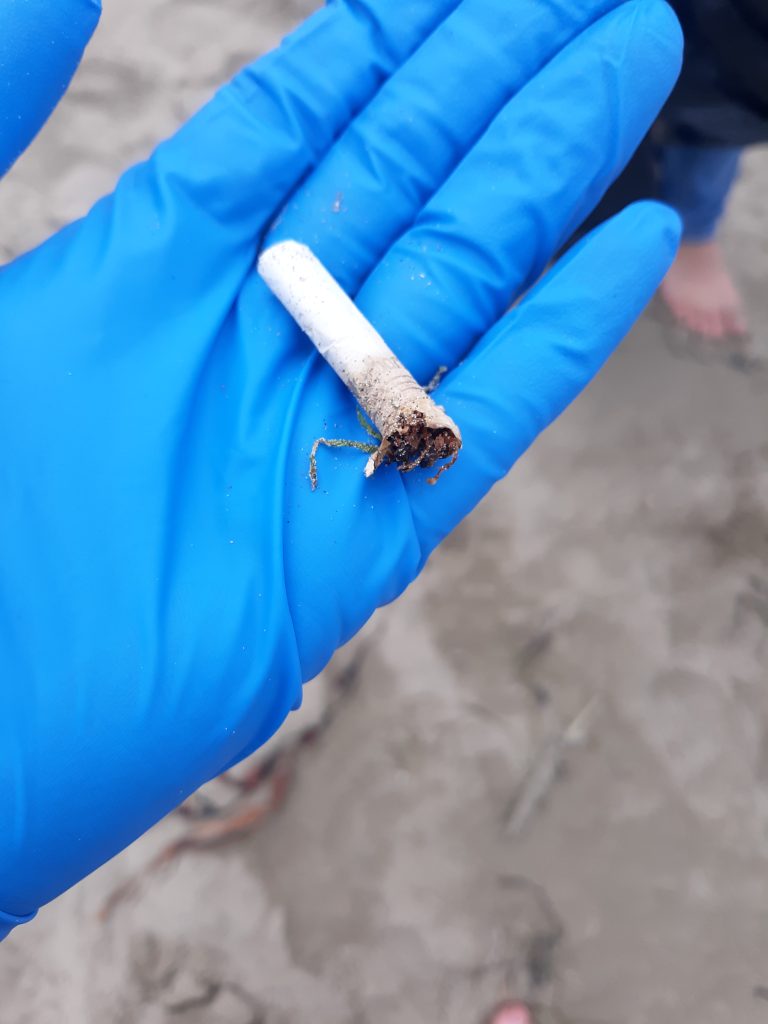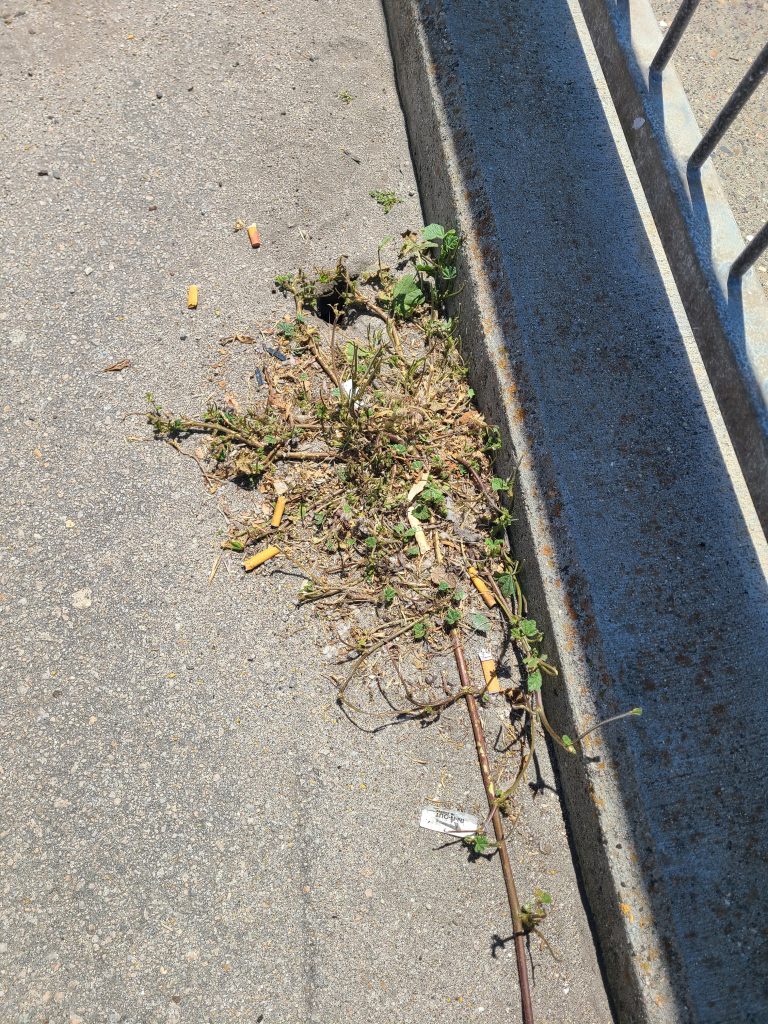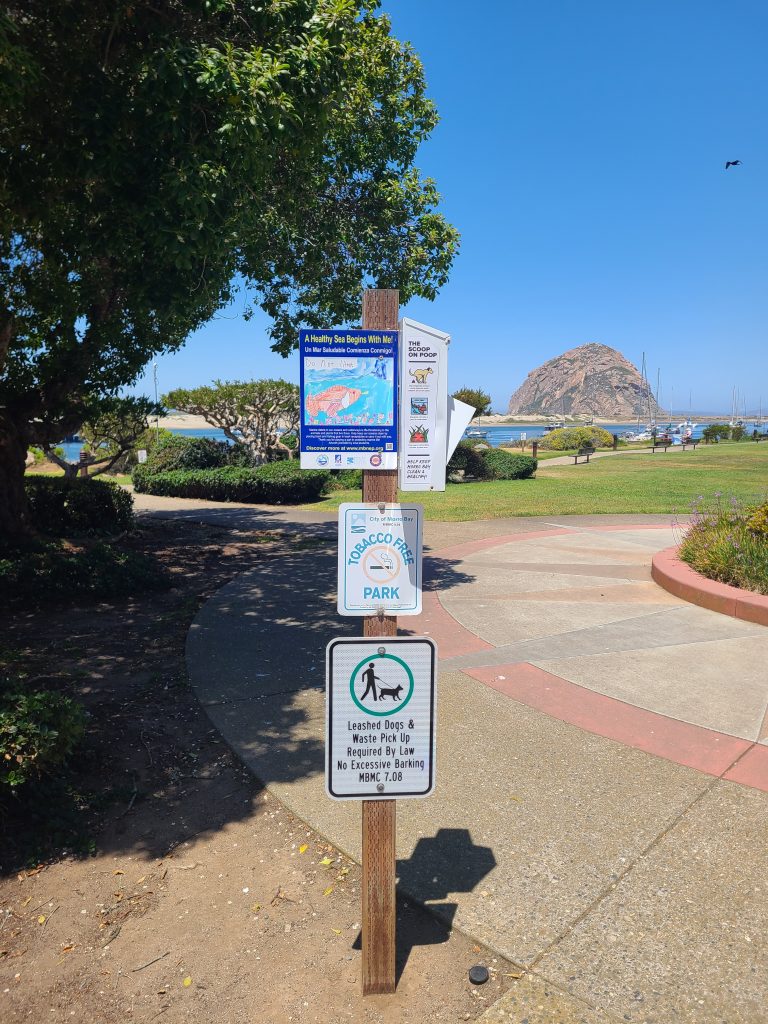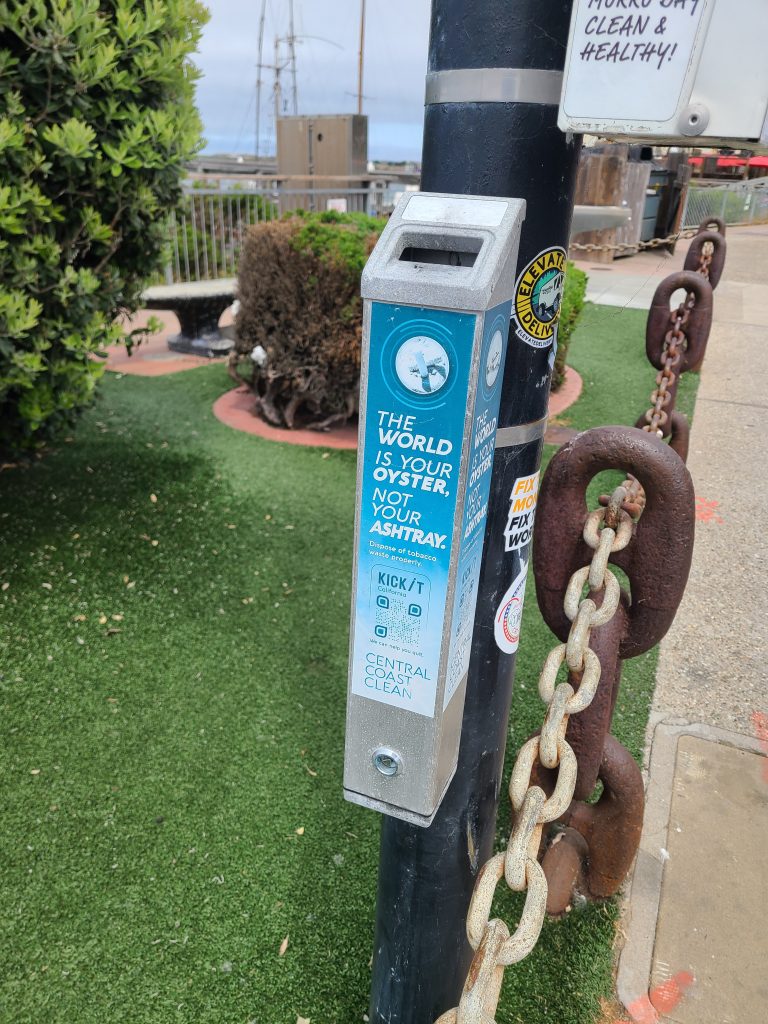The Estuary Program works to protect the Morro Bay estuary for both people and wildlife, which can include addressing human-caused impacts such as trash. We host cleanups throughout the year, including for Earth Day, July 4th, and California Coastal Cleanup Day. We’ve noticed several common types of litter and debris in the Morro Bay watershed. This blog is the first in a series that dives into some of these top trash offenders and the problems they cause.
Cigarette Butts – They’re Everywhere!
Despite a decrease in global tobacco use over the past several decades, there are still an estimated 1.25 billion smokers worldwide. About 6 trillion cigarettes are smoked each year, but only about a quarter of those cigarette butts make it into the trash. That means approximately 4.5 trillion cigarette butts become litter each year. This makes them the most littered personal item, even more so than plastic bottles or bags. They are also the most commonly found item during beach cleanups, according to Surfrider. During our Earth Day cleanup this year, we asked participants to use the Surfrider beach cleanup data card to track the types of litter they found. Most participants counted so many cigarette butts that they ran out of room on their form or lost count altogether!

Concerns with Cigarette Butts
Beyond being unsightly, cigarette butts have a major impact on the health of local and global ecosystems. Some components of cigarettes like the tobacco and paper come from natural fibers, which can biodegrade. But cigarette filters are made of a plastic called cellulose acetate which eventually break down into microplastics that can remain in the environment forever. Beyond this, tobacco and tobacco smoke can contain a variety of carcinogens including lead, arsenic, and cadmium. The filter absorbs these toxins and can release them into soil or water when littered. Some animals mistake cigarette butts for food, which can make them sick or kill them.

Cigarette butts can also have a large impact on wildlife and ecosystem health. Cigarette smoke contains numerous toxins and carcinogens, contributing to air pollution. Littered cigarette butts can spark wildfires, impacting the environment and human health. The cultivation, processing, and transportation conducted by the tobacco industry creates large amounts of CO2 every year, equal to about one-fifth of the CO2 from the airline industry. Tobacco farming also can cause the same environmental impacts as other large-scale agriculture, including runoff of fertilizers and pesticides. So even if cigarette butts are properly disposed of, the cigarette industry itself can have a significant impact on the environment and the health of people and wildlife.
Beyond Butts – Other Types of Tobacco Products
In recent years, “smokeless” forms of tobacco such as e-cigarettes (vapes) and nicotine pouches have risen in popularity. While vapes have been framed as a “safer” alternative to cigarettes, they still pose many of the same (or worse) environmental harms as cigarettes. Broken or improperly disposed e-cigarettes can leak their “juice” (tobacco liquid) into soil or water, allowing those toxins to leach into the environment. In the US, 150 million e-cigarettes are disposed of every year. If disposed of improperly, the lithium batteries in these vapes can cause fires, explosions, or environmental contamination.

Other forms of smokeless tobacco, including nicotine or tobacco pouches and chewing tobacco, can also have negative environmental impacts. If improperly disposed (spit onto the ground, for example), the chemicals and toxins in the tobacco can seep into the soil or water and be inadvertently consumed or absorbed by plants or animals.
What Can You Do to Help?
How can you help make a difference? Don’t smoke, and encourage others to quit smoking. If you smoke or know someone who does, make sure that cigarette butts are disposed of properly. Some towns, including Morro Bay, have special cigarette trash cans that ensure cigarettes are extinguished after disposal. TerraCycle offers a cigarette butt recycling program, which converts them into compost and plastic products.

To help keep your town clean, consider attending a cleanup event (such as those hosted by the Estuary Program) or pick up trash on your own. You can track your trash and enter it in the Ocean Conservancy Clean Swell app or the Surfrider Foundation cleanup report form. This data helps researchers understand the impacts of tobacco products and other litter on local environments. Every little bit counts – we appreciate your help!
Sources:
https://www.earthday.org/tiny-but-deadly-cigarette-butts-are-the-most-commonly-polluted-plastic/
https://www.sciencedirect.com/science/article/abs/pii/S0013935119300787
https://truthinitiative.org/research-resources/harmful-effects-tobacco/tobacco-and-environment
https://www.who.int/news/item/31-05-2022-who-raises-alarm-on-tobacco-industry-environmental-impact
Help us protect and restore the Morro Bay estuary!
- Donate to the Estuary Program today and support our work in the field, the lab, and beyond.
The Estuary Program is a 501(c)3 nonprofit. As a result, we depend on funding from grants and generous donors to continue our work. - Support us by purchasing estuary-themed gear from ESTERO. This locally owned and operated company donates 20% of proceeds from its Estuary clothing line and 100% of Estuary decal proceeds to the Estuary Program. Thank you, ESTERO!
- Purchase items from the Estuary Program’s store on Zazzle. Zazzle prints and ships your items, and the Estuary Program receives 10% of the proceeds.
- Subscribe to our seasonal newsletter: Between the Tides!
- We want to hear from you! Please take a few minutes to fill out this short survey about what type of events you’d like to see from the Estuary Program. We appreciate your input!